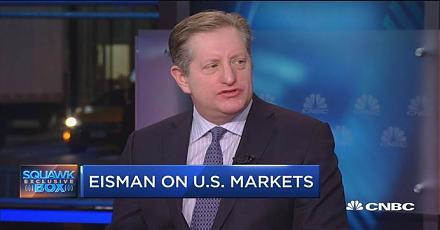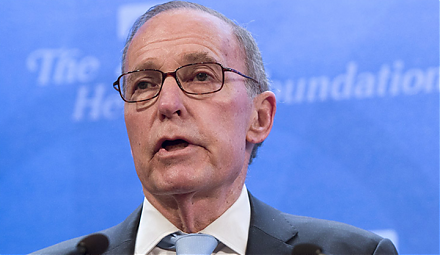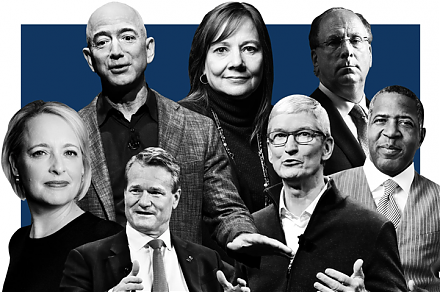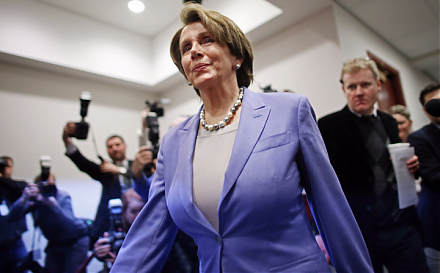

2020-02-05 10:28:00 Wed ET
stock market alpha interest rate macrofinance investments mergers acquisitions stock return s&p 500 value momentum principles asset market stabilization asset price fluctuations warren buffett berkshire hathaway charlie munger benjamin graham intelligent investor safety margin fear greed size
Our proprietary AYA fintech finbuzz essay shines light on the modern collection of business insights with executive annotations and personal reflections. This stock market investment guide shares the step-by-step principles of Warren Buffett with fresh economic insights into business management, corporate governance, and fundamental factor investment etc. This topical guide draws key biographical details, personal stories, and life lessons from Warren Buffett. This essay is the first blog post in a series of the recent top 40 books on stock market investment, business management, and lean entrepreneurship. Our future AYA fintech finbuzz essays focus on the best business minds of Warren Buffett, Jeff Bezos, Larry Page, Steve Jobs, Bill Gates, Mark Zuckerberg, Gordon Moore, Andrew Grove, Jim Collins, Clayton Christensen, and so forth.
Warren Buffett shares his stock investment principles and other life lessons of fear, greed, love, and friendship.
Alice Schroeder (2008)
The snowball: Warren Buffett and the business of life
In this big business book, Schroeder provides biographical details on the American business and investment titan Warren Buffett. She discusses the core Buffett ideas and principles for effective fundamental factor investment. These principles include the margin of safety, intrinsic value, investor sentiment (e.g. fear and greed), circle of competence, debt downside risk management, passive stock market index fund investment, equilibrium compound interest, and love and several other aspects of life. Schroeder describes the personal life and business journey of Warren Buffett who offers candid remarks on his own insecure and awkward social relationships.
At a young age, Buffett learned to calculate odds and loved numeric assignments. Buffett worked hard to be likable to get along well with others, but his friends might characterize him as a lone wolf. As a child, Buffett intended to make money on his own. He felt that money could make him sufficiently independent to accomplish his goals in life. Buffett indicated that his greatest aspiration was to work for himself.
Compound interest became an important concept to Buffett. Money could snowball into astronomical dollars as new interest figures could accrue on both principal and interest payments. This snowball effect of compound money could thus transform a small amount of money into a fortune.
At an early stage of his life, Buffett and his sister bought 3 shares of Cities Service Preferred Stock for about $115. The share price plunged and eventually recovered to allow Buffett and his sister to earn a $5 net profit. Unfortunately, Buffett sold the stock before it surged to $202 per share. This incident empowered Buffett to learn the first 3 stock investment lessons. First, he discovered not to fixate on the share price (or even market valuation) of a particular stock. Share price fluctuations often would reflect investor sentiments (such as fear and greed). Second, he learned not to rush to grab a small profit. The long-term fundamental intrinsic value of a stock would better justify any subsequent buy-and-sell decisions. Third, he would refrain from taking responsibility for profits or losses of other stock market investors unless he was completely sure about his stock investment success. These first 3 lessons served as the main principles for Buffett throughout his subsequent investment life.
Buffett started his college education at the Wharton School of Business, University of Pennsylvania. He never went out on any dates, and he sometimes attended his fraternity parties. Buffett was often able to draw a little crowd by talking about stock market issues. When his father, a 4-term Republican Representative for the state of Nebraska, was not able to win a re-election to Congress in 1948, Warren Buffett left Wharton toward the end of his sophomore year, returned to his family in Omaha, and then enrolled in the University of Nebraska in Lincoln.
In 1950, Buffett applied for admission to the Harvard Graduate School of Business. While his college grades were good, they were not stellar. The Harvard interviewer declined his application and advised Buffett that he would have a better chance in a few years. Buffett turned his attention to Columbia University where Professors David Dodd and Benjamin Graham had published their stock investment book, The Intelligent Investor, in 1949. In this classic book, Dodd and Graham advocated the theme that there should be a systematic approach to investing in the stock market. Later Buffett gained admission to the Columbia Graduate School of Business.
Buffett looked up to Ben Graham with awe and respect. In addition to teaching at Columbia, Graham had developed Graham-Newman Corporation into one of the best-known stock investment firms in the industry. Graham achieved stellar stock investment performance mainly through his great skill at analyzing balance sheets, income statements, and cash flow statements. He designed the first thorough and systematic method of analyzing the fundamental value of a given stock with an in-depth analysis of financial statements. Buffett learned 3 main investment principles from Dodd and Graham.
First, it would be wise to view a stock as the right to own a small piece of a business. A stock would be worth a fraction of what one would be happy to pay for the whole enterprise. Hence, it would be prudent to pay the fair value of a stock as a fraction of total enterprise value.
Second, it would be wise to use reasonable margins of safety as each stock market investor would evaluate his or her stock investment decisions on the primary basis of financial forecasts and estimates etc. A wide margin of safety would help ensure that human judgment biases and errors would not wipe out the positive effects of good investment decisions. It would be advisable for the investor not to place bets on individual stocks with thin margins of safety.
Third, it would be wise for each stock market investor to treat Mr Market as his or her servant (but not a master). Graham invented Mr Market as a moody character who offered to buy-and-sell stocks at unreasonable prices on every business day. Graham emphasized that the fickle and capricious moods of Mr Market should not influence the consensus view of fundamental value. Mr Market would occasionally offer each investor the chance to buy-low-and-sell-high.
After a reasonably brief courtship, Warren Buffett married Susie Thompson in April 1952. Thompson understood the intangible damage that his mother's temper had done to Buffett's self-esteem. What Buffett needed was family love. Buffett had an innate desire to be free from unfair criticisms. He also needed to feel that he could succeed in social relationships. This core communication would later cause Buffett to appreciate love and friendship beyond money and other materialistic items.
In July 1953, the couple welcomed their first child, Susan Alice Buffett. About one year later, Graham-Newman recruited Buffett in New York City. Buffett found a 3-bedroom apartment in New York where the family could live. At Graham-Newman, Buffett went through Standard & Poor's and Moody's Manual to look for companies that were selling below book value. These companies were what Graham regarded as *cigar butts* or cheap stocks that many stock market analysts had overlooked. Graham-Newman bought small positions in many stocks for better diversification. Buffett learned the art of capital allocation for placing equity bets on the stocks that would earn supernormal returns.
Buffett managed to achieve exceptional stock investment performance at Graham-Newman, and this great performance made him the golden boy of the firm. There were waves of money rolling into the Buffett household, but Buffett gave his wife a rather modest household allowance. In December 1954, meanwhile, their second child, Howard Graham Buffett was born.
When Ben Graham retired in Spring 1956, he offered Buffett the opportunity to be a new general partner in the firm. Buffett declined the offer because what he valued about Graham-Newman was the rare opportunity to work with Ben Graham himself. Buffett decided to start his own investment partnership in Omaha. As he could not tolerate criticisms from others (especially if stock performance went down), Buffett planned to invite only his family and friends into the partnership.
Buffett fulfilled his hot pursuit of money management and then amassed more than $1 million in 7 partnerships in 1958. In the same year, the Buffetts bought their first house for $31,500 in Omaha, and their third child, Peter Buffett, was born. Buffett invested in cost-effective value stocks with favorable fundamental factors, and he would avoid downside risk and excessive debt usage. In order to avoid investment mistakes, Buffett would invest in stocks with reasonable margins of safety. These stocks would remain in his circle of competence.
In January 1962, Buffett dissolved all of the partnerships into a single entity, Buffett Partnership Ltd (or BPL). Buffett began taking on overhead expenditures by renting office space. For the first time, Buffett invested his own money (almost $450,000) into the partnership. Buffett continued to apply the cigar-butt technique by buying stocks below their respective book values. Buffett began owning so many shares of the stock that he controlled the entire company. He could sell off all the shares of the stock to liquidate all the corporate assets at a hefty profit. Meanwhile, Buffett had become friends with an attorney Charlie Munger. With his own investment firm and proceeds of real estate investments, Munger bought cigar butts, did arbitrage, and acquired small businesses. In addition to the fundamental prospects of a given company, Munger focused on the intangible characteristics of companies such as the quality of management, corporate governance, brand recognition and durability, and the broader competitive landscape.
In the 1970s, Buffett and Munger worked together and built their investment empire of more than $500 million assets under management. Buffett and Munger owned and controlled more than 50% of Berkshire Hathaway, 65% of Blue Chip Stamps, and these 2 companies owned National Indemnity, Rockford Bank, See's Candies, Wesco, Buffalo Evening News, 10% of the Washington Post, 15% of GEICO, and many other stocks. Compound interest worked wonders on behalf of Buffett and Munger. Buffett and Munger would estimate the intrinsic value of a given stock with little downside risk, and then they would buy huge numbers of shares with a broad margin of safety to remain within the circle of competence. Buffett and Munger saw the exponential growth of their stock investments through the 1980s.
In 1983, Buffett and Munger agreed on fair value terms, and Berkshire Hathaway acquired Blue Chip. Buffett and Munger became full partners for the first time, and Buffett was the chairman and Munger the vice chair. At age 55, Buffett became a billionaire. Over the years, the Buffett-Munger investment empire soared in equity valuation. In 1996, Berkshire Hathaway appreciated to $34,000 per share with $41 billion equity value. (Later Berkshire Hathaway would appreciate to more than $87 billion stock market valuation in 2018.)
In September 2003, Fortune named Buffett the most influential person in business and finance. However, this accolade preceded the bad news that Buffett's wife was diagnosed with oral cancer. She would need a major surgery, and there was a 50-50 chance of surviving 5 years. Buffett decided to spend every weekend with his wife during these hard times.
Before this family incidence, Buffett had focused on business issues and mistakes of omission. What he could have done but failed to accomplish plagued him most. After his wife's cancer surgery, Buffett developed a new perspective that success should be measured in terms of family love and friendship.
In June 2006, Buffett announced that he would donate 85% of his Berkshire shares (worth $37 billion at that time) to a group of charitable foundations such as the Bill and Melinda Gates Foundation. Over the years, Buffett had become close friends with Bill Gates, and Buffett developed an admiration for the vision and structure of the Gates Foundation. Buffett divided the residual equity stakes to about $3 billion to his children's foundations and another $3 billion to the Susan Thompson Buffett Foundation.
Warren Buffett's key fundamental stock investment insights and life lessons remain fresh and practically relevant nowadays. His personal stories and life lessons can serve as self-help inspirations for many stock market investors.
This analytic essay cannot constitute any form of financial advice, analyst opinion, recommendation, or endorsement. We refrain from engaging in financial advisory services, and we seek to offer our analytic insights into the latest economic trends, stock market topics, investment memes, personal finance tools, and other self-help inspirations. Our proprietary alpha investment algorithmic system helps enrich our AYA fintech network platform as a new social community for stock market investors: https://ayafintech.network.
We share and circulate these informative posts and essays with hyperlinks through our blogs, podcasts, emails, social media channels, and patent specifications. Our goal is to help promote better financial literacy, inclusion, and freedom of the global general public. While we make a conscious effort to optimize our global reach, this optimization retains our current focus on the American stock market.
This free ebook, AYA Analytica, shares new economic insights, investment memes, and stock portfolio strategies through both blog posts and patent specifications on our AYA fintech network platform. AYA fintech network platform is every investor's social toolkit for profitable investment management. We can help empower stock market investors through technology, education, and social integration.
We hope you enjoy the substantive content of this essay! AYA!
Andy Yeh
Chief Financial Architect (CFA) and Financial Risk Manager (FRM)
Brass Ring International Density Enterprise (BRIDE) © 2013-2023
Do you find it difficult to beat the long-term average 11% stock market return?
It took us 20+ years to design a new profitable algorithmic asset investment model and its attendant proprietary software technology with fintech patent protection in 2+ years. AYA fintech network platform serves as everyone's first aid for his or her personal stock investment portfolio. Our proprietary software technology allows each investor to leverage fintech intelligence and information without exorbitant time commitment. Our dynamic conditional alpha analysis boosts the typical win rate from 70% to 90%+.
Our new alpha model empowers members to be a wiser stock market investor with profitable alpha signals! The proprietary quantitative analysis applies the collective wisdom of Warren Buffett, George Soros, Carl Icahn, Mark Cuban, Tony Robbins, and Nobel Laureates in finance such as Robert Engle, Eugene Fama, Lars Hansen, Robert Lucas, Robert Merton, Edward Prescott, Thomas Sargent, William Sharpe, Robert Shiller, and Christopher Sims.
Follow AYA Analytica financial health memo (FHM) podcast channel on YouTube: https://www.youtube.com/channel/UCvntmnacYyCmVyQ-c_qjyyQ
Follow our Brass Ring Facebook to learn more about the latest financial news and fantastic stock investment ideas: http://www.facebook.com/brassring2013.
Free signup for stock signals: https://ayafintech.network
Mission on profitable signals: https://ayafintech.network/mission.php
Model technical descriptions: https://ayafintech.network/model.php
Blog on stock alpha signals: https://ayafintech.network/blog.php
Freemium base pricing plans: https://ayafintech.network/freemium.php
Signup for periodic updates: https://ayafintech.network/signup.php
Login for freemium benefits: https://ayafintech.network/login.php
If any of our AYA Analytica financial health memos (FHM), blog posts, ebooks, newsletters, and notifications etc, or any other form of online content curation, involves potential copyright concerns, please feel free to contact us at service@ayafintech.network so that we can remove relevant content in response to any such request within a reasonable time frame.
2017-04-01 06:40:00 Saturday ET

With the current interest rate hike, large banks and insurance companies are likely to benefit from higher equity risk premiums and interest rate spreads.
2019-08-03 09:28:00 Saturday ET

U.S. inflation has become sustainably less than the 2% policy target in recent years. As Harvard macro economist Robert Barro indicates, U.S. inflation has
2018-08-13 12:39:00 Monday ET

White House chief economic adviser Larry Kudlow points out that the recent U.S. dollar strength shows a clear sign of investor confidence and optimism. Gree
2020-05-05 09:31:00 Tuesday ET

Our fintech finbuzz analytic report shines fresh light on the fundamental prospects of U.S. tech titans Facebook, Apple, Microsoft, Google, and Amazon (F.A.
2018-11-29 11:33:00 Thursday ET

A congressional division between Democrats and Republicans can cause ripple effects on Trump economic reforms. As Democrats have successfully flipped the Ho
2018-02-07 06:38:00 Wednesday ET

The new Fed chairman Jerome Powell faces a new challenge in the form of both core CPI and CPI inflation rate hikes toward 1.8%-2.1% year-over-year with stro